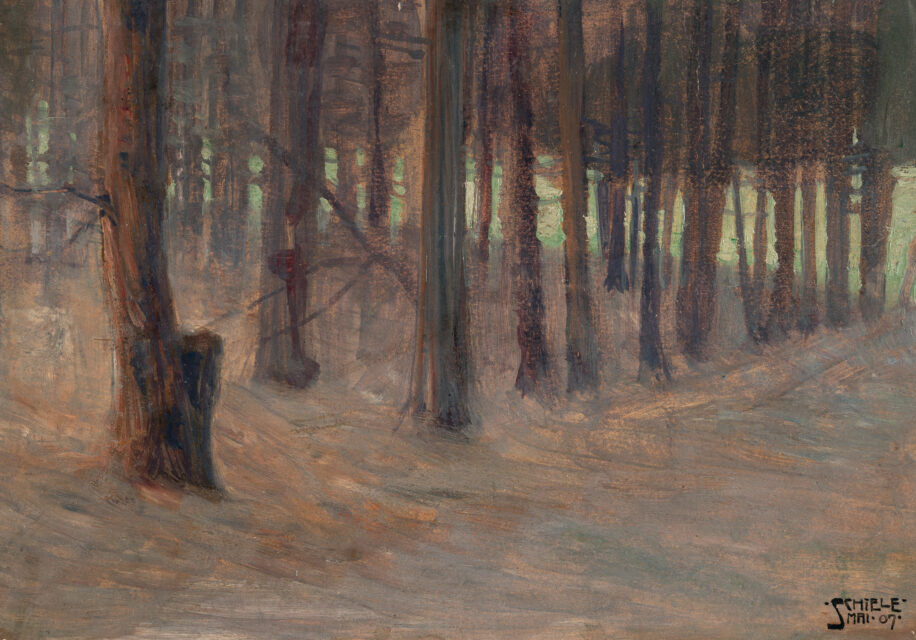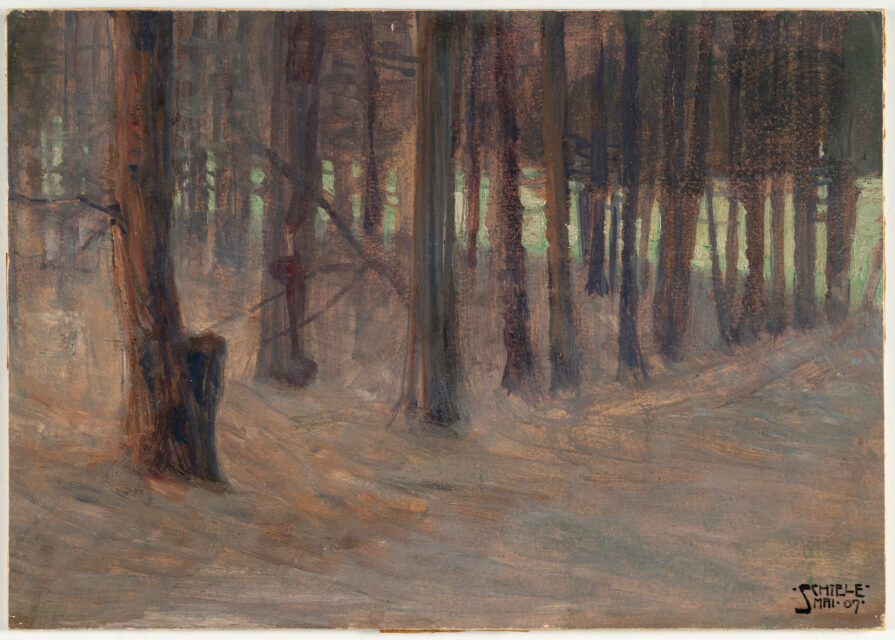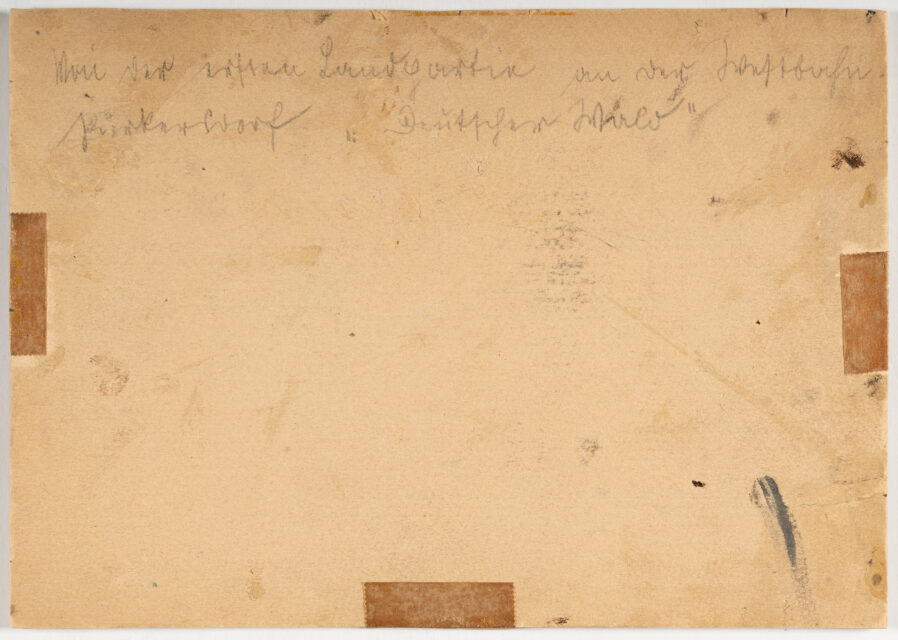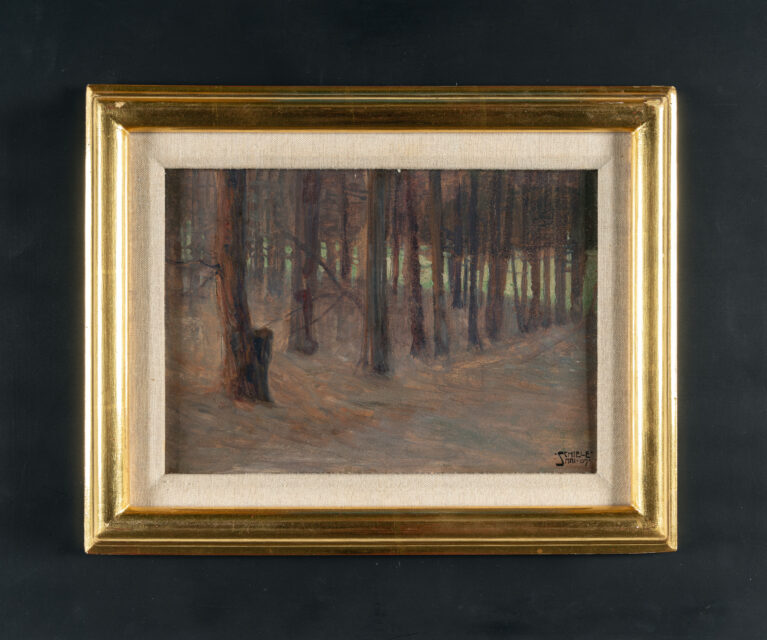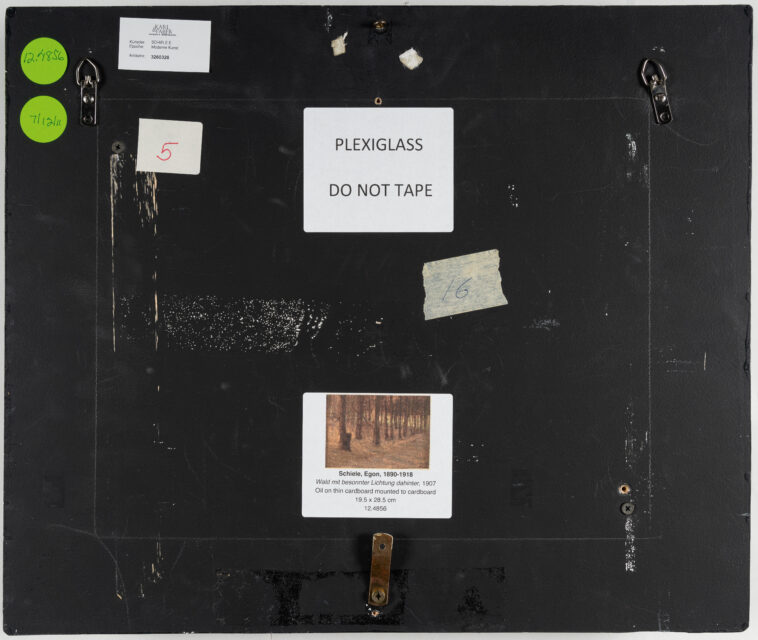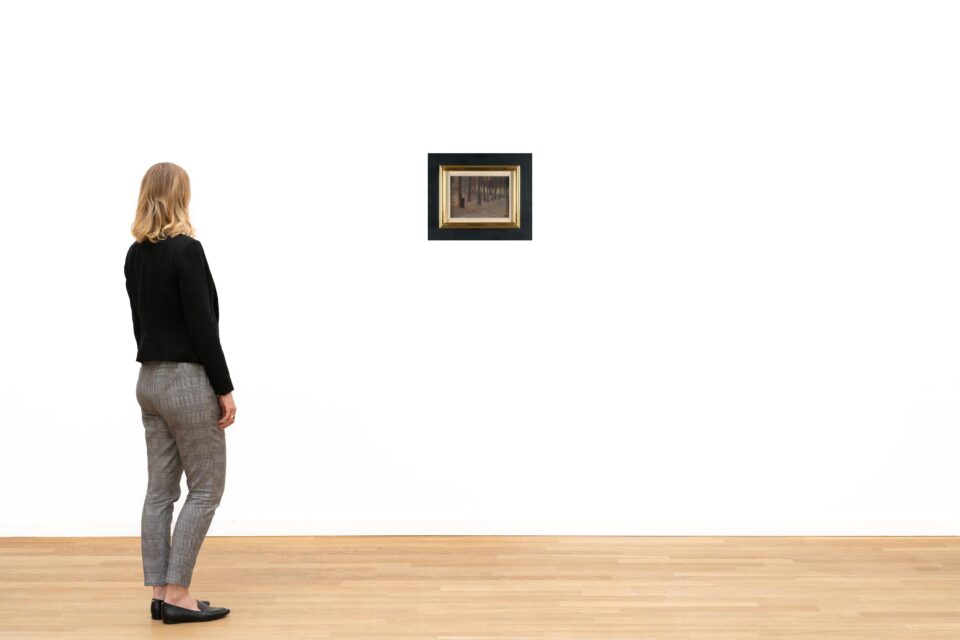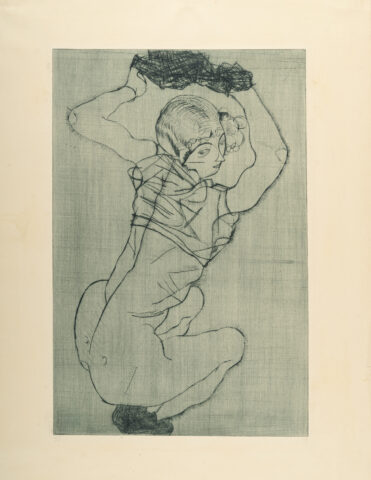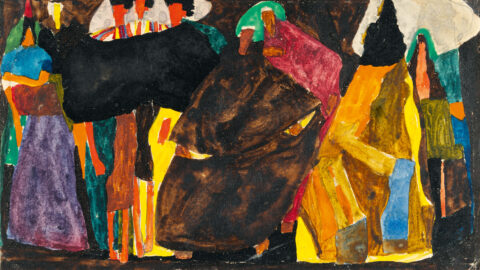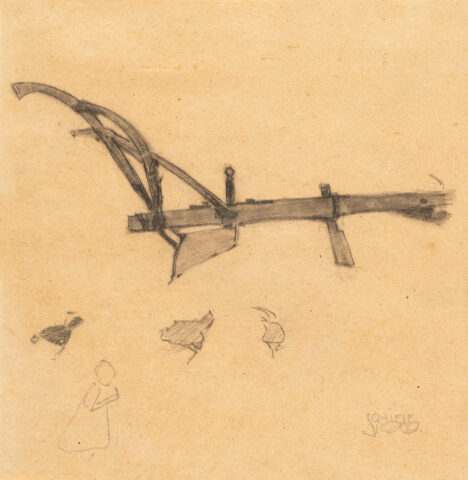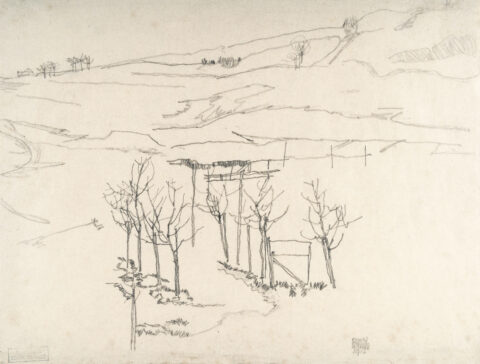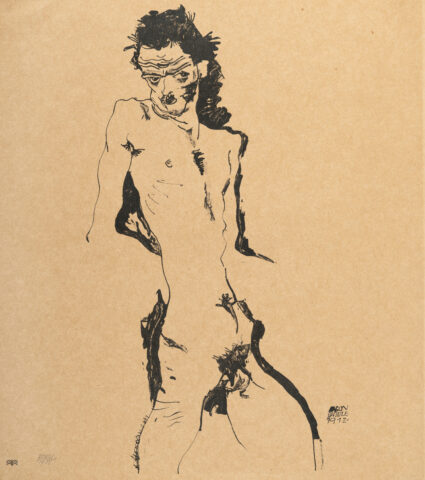
Forest with sunny clearing behind it
Details
Kallir P 40.
Literature:
Leopold, Rudolf, Egon Schiele. Gemälde Aquarelle Zeichnungen, Salzburg 1972, p. 521, cat. no. 18, with b/w illus. and 2nd revised edition, Munich 2020, p. 527, cat. no. 18, with col. illus;
Malafarina, Gianfranco, L’opera di Schiele, Milan 1982, cat. no. 19, no illus.
Exhibition:
Egon Schiele, Pinacoteca C., Rome/Museo d’Arte Moderna Ca’ Pesaro, Venice 1984, cat. no. 4;
Egon Schiele: An Exhibition of 17 Paintings, Serge Sabarsky Gallery, New York 1985, cat. no. 1, with col. illus;
Egon Schiele: 1890-1918. A Centennial Retrospective, Nassau County Museum of Art, Roslyn/NY 1990, label on the reverse of the frame;
Egon Schiele: 100 drawings and watercolours, Oberösterreichisches Landesmuseum, Linz et al. 1990-1993, cat. no. 2;
Egon Schiele: Acquarelli e dipinti, Palazzo della Permanente, Milan 1991, cat. no. 66;
Egon Schiele: Paintings from American Collections, Rupertinum, Salzburg/ Österreichische Galerie Wien/Oberes Belvedere, Vienna 1991/92;
Egon Schiele, Fondation Pierre Gianadda, Martigny 1995, cat. no. 5;
Neue Galerie, New York 2009-2011;
Gustav Klimt and Egon Schiele: 1918 Centenary, Neue Galerie, New York 2018/19.
Provenance:
Rudolf Leopold Collection, Vienna;
Serge Sabarsky Collection/Asset, New York, acquired from the aforementioned in the 1960s;
Collection/Foundation Vally Sabarsky, New York.
Description
– One of the earliest oil paintings by the almost 17-year-old Egon Schiele
– The composition shows Impressionist stylistic elements and the incipient influence of his role model and patron Gustav Klimt
– The painting was part of the collections of Rudolf Leopold and Serge Sabarsky and was shown at numerous exhibitions
In autumn 1906, the 16-year-old Egon Schiele began his studies at the Academy of Fine Arts in Vienna. The first few months of his studies were characterised by nude and portrait drawing. However, after just six months, Schiele turned almost excessively to oil painting in the spring of 1907 – presumably on his own initiative and outside the Academy. The numerous works created over the next two years until 1909 make up almost half of his overall oeuvre of paintings. In addition to portraits, the most frequent motifs are landscapes and recognisable views of places that can be attributed to Schiele’s travels. Many of his paintings are characterised by a deliberately limited colour palette and a slightly grainy surface texture. In these early landscape paintings, Schiele often strives for an impressionistic effect, as in the work “Forest with sunny clearing behind”, which is one of Schiele’s earliest oil paintings. According to the inscription on the reverse, it was painted on an excursion to Purkersdorf in the Vienna Woods, not far from Vienna. This “forest clearing” shows influences from Gustav Klimt, with whom the young student Schiele made contact in the same year. Like Klimt in his “Buchenwald I” 1902 (now in the Albertinum), he chooses a very limited picture detail without a sky and without a recognisable horizon. The upper edge of the picture cuts off the treetops; only the bare trunks are recognisable and, in their vertical-parallel rhythm together with the forest path laid out diagonally to them, create a fine pictorial dynamic. Instead, Schiele directs our gaze downwards: The focus is not on the trees or the forest as a highly symbolic motif of the turn of the century, but rather on the subdued sunlight shining through them and creating impressionistic sunspots on the soft forest floor.
In the following years, Klimt became Schiele’s patron and source of inspiration. Schiele’s style increasingly blended conventional academic elements with those of Art Nouveau to create an unmistakable visual language. His works polarised the contemporary public, who were either thrilled or shocked. Today, Egon Schiele is undoubtedly considered the most important representative of early Austrian Expressionism.
* All results incl. buyer’s premium (27%) without VAT. No guarantee, subject to error.
** All post-auction prices excl. buyer's premium and VAT. No guarantee, subject to error.
*** Conditional Sale: The bid was accepted below the limit. Acquisition of the work may still be possible in our post-auction sale.
R = regular taxation
N = differential taxation on works of art which originate from a country outside of the EU
The private or commercial use of images shown on this Website, in particular through duplication or dissemination, is not permitted. All rights reserved.


